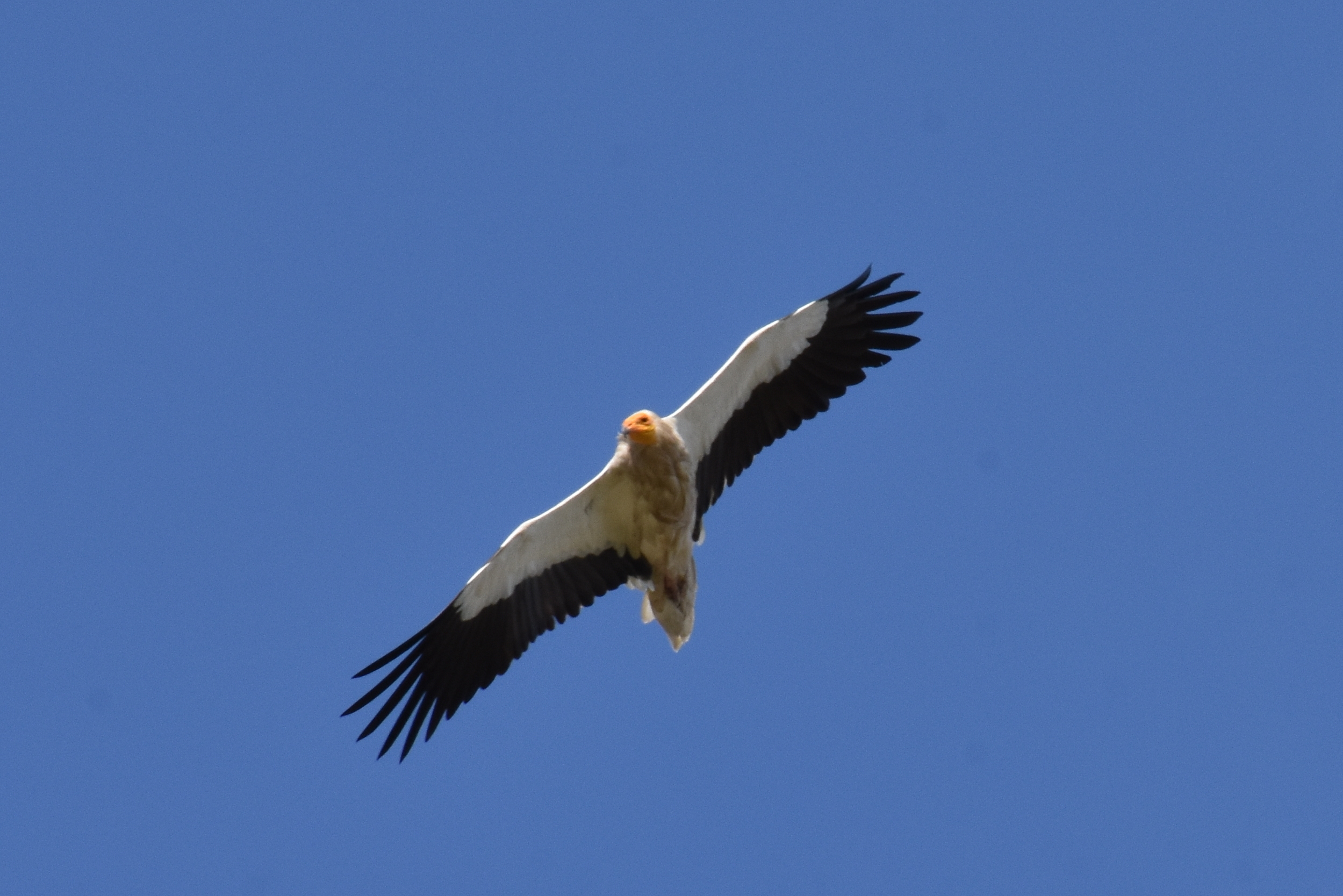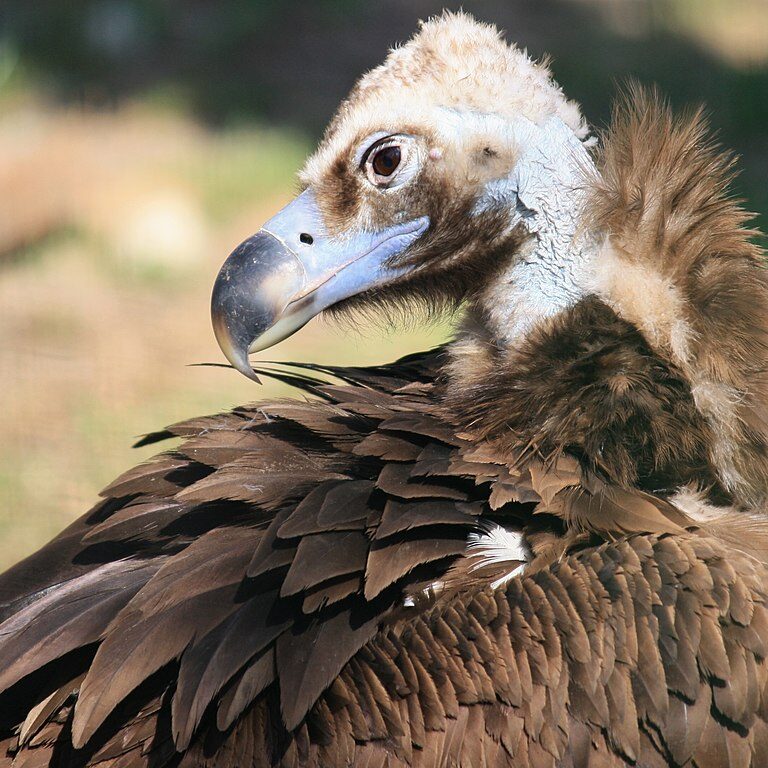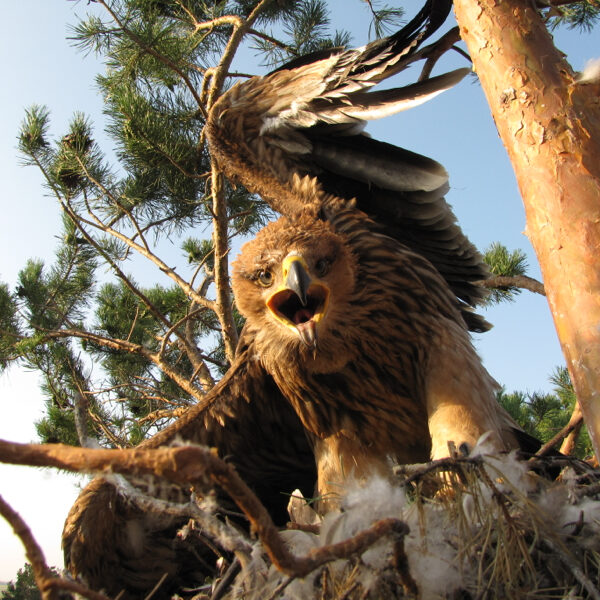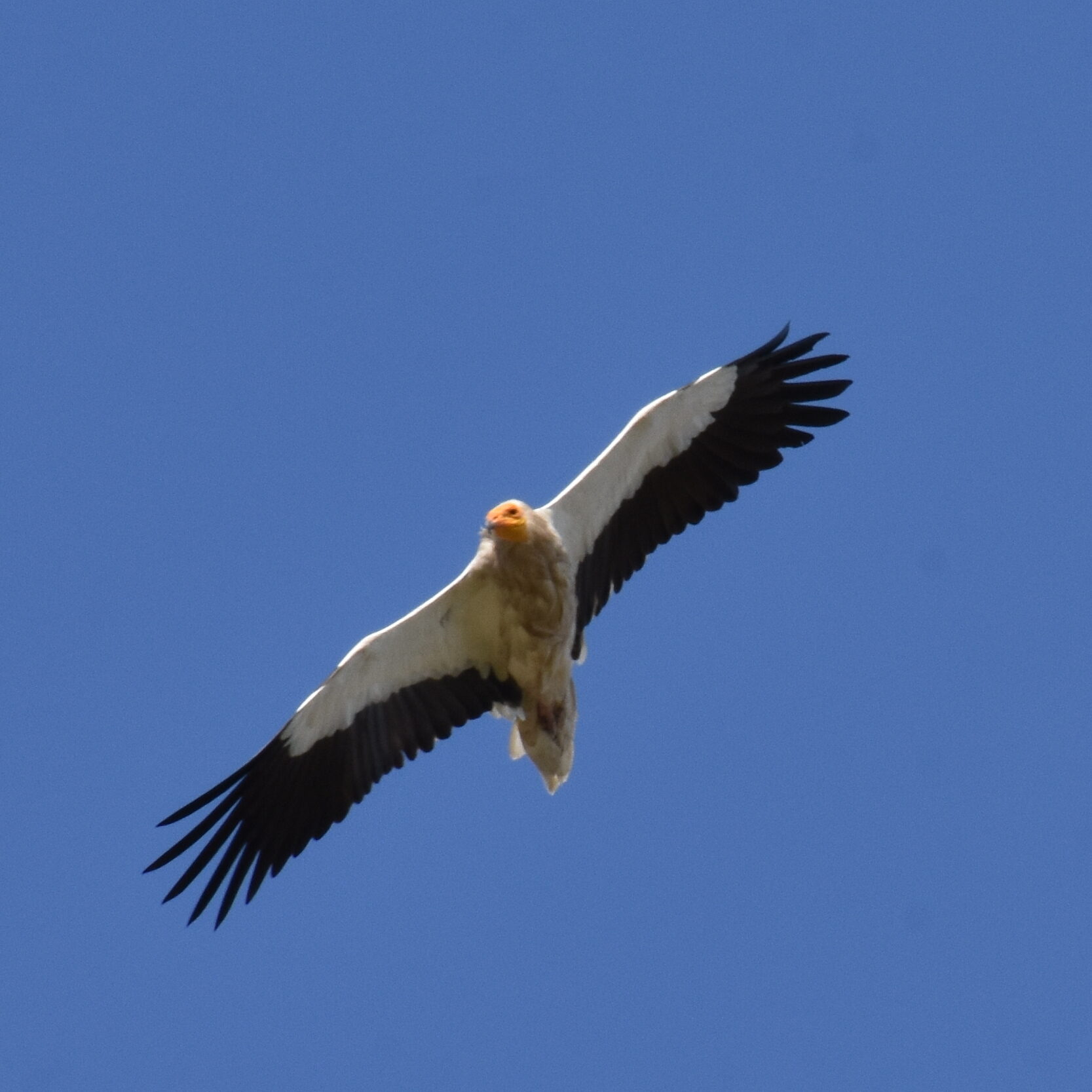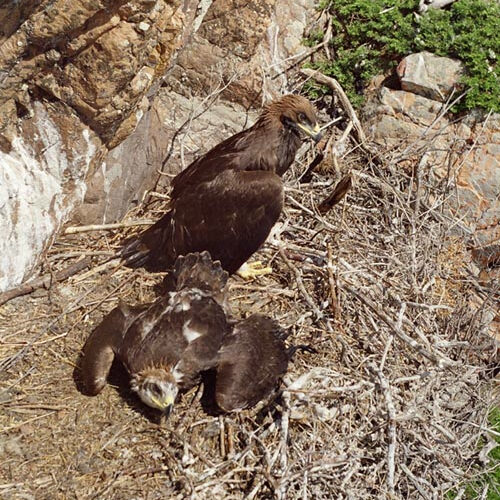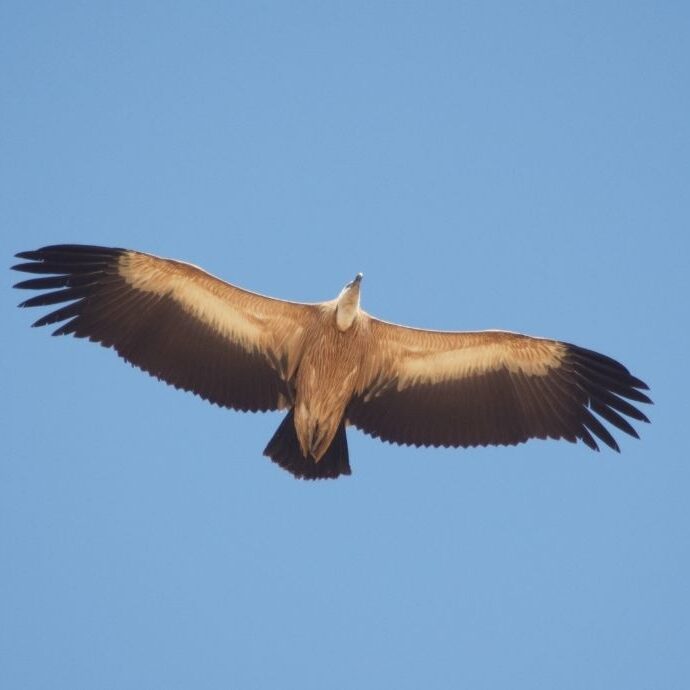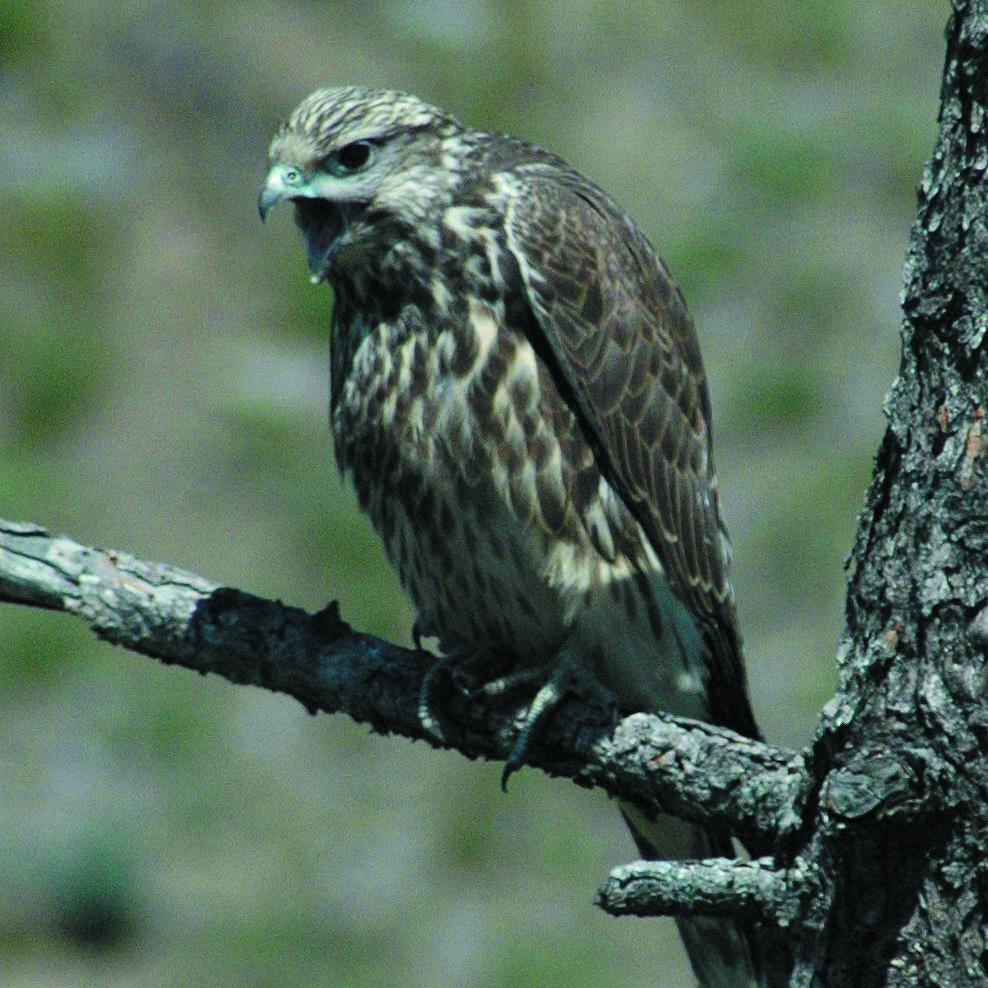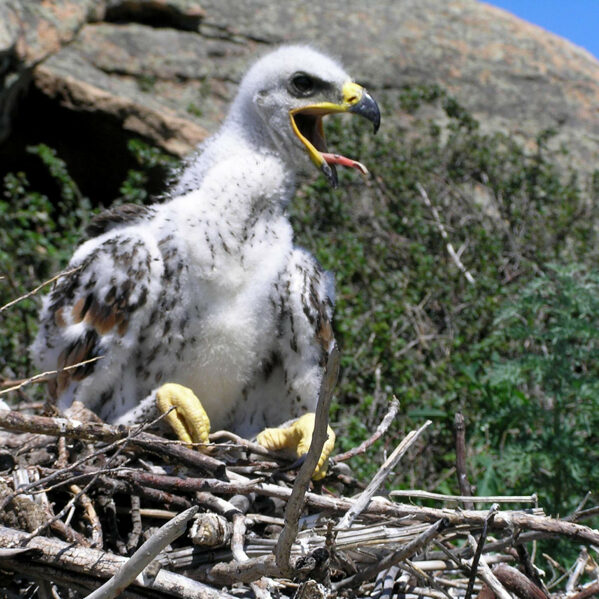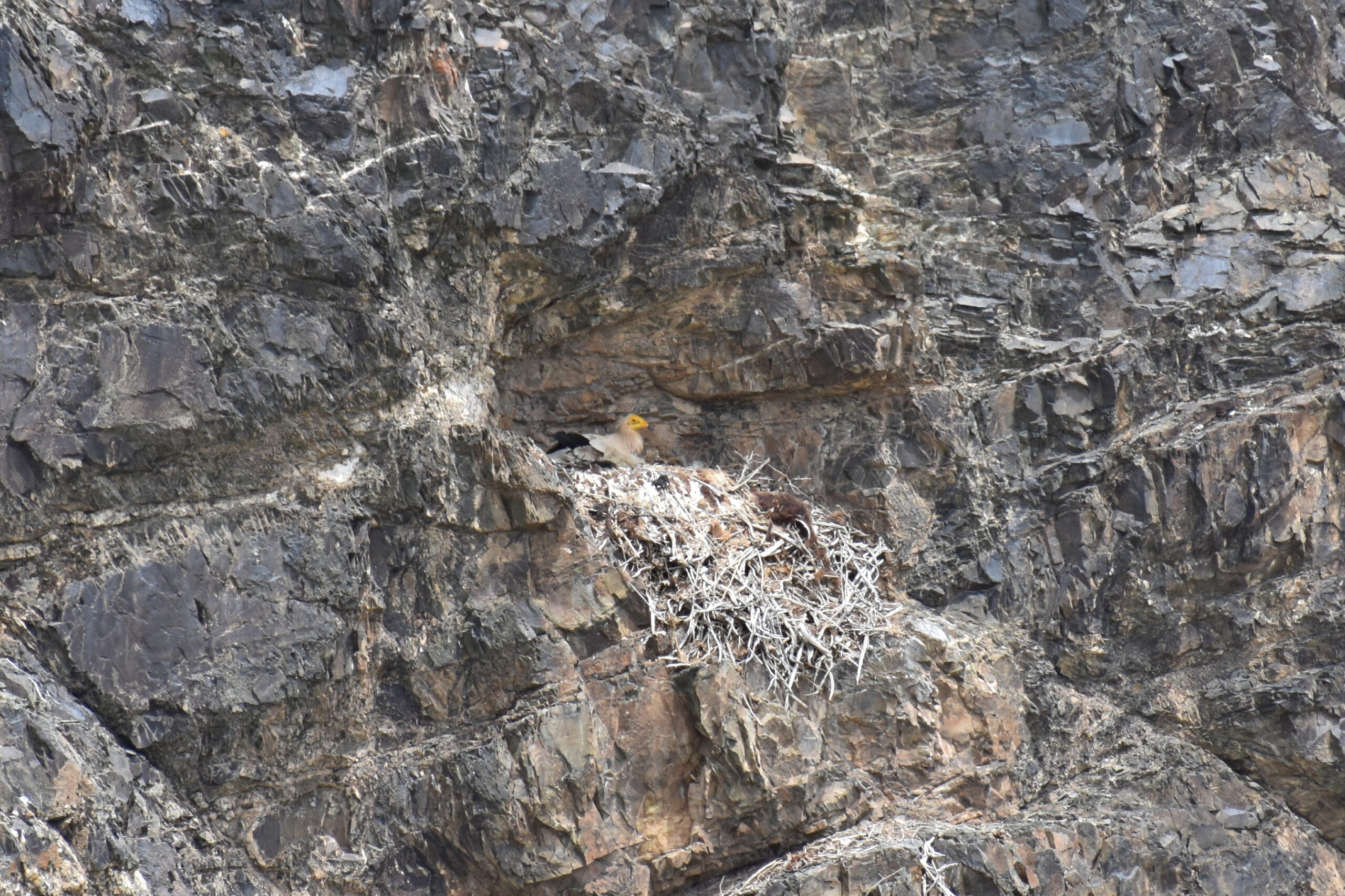Egyptian Vulture
The Egyptian vulture (Neophron percnopterus) is a scavenger with a wide geographical range, including populations in Central Asia. Adult vultures have white plumage around their head, yellow face, and long black feathers along the edges of their wings. Possessing a wingspan of 180 cm (5 ft. 11 inches) and weighing only 2.5 kg (5 lb. 8 oz.), the Egyptian vulture is one of the smallest vultures. [By way of comparison, the wingspan of the Griffon vulture measures three meters (9 ft. 10”)].
Vulture chicks are dark brown. As this bird matures, it becomes whiter and whiter. Vultures have no feathers on their heads, a characteristic that allows them to stay relatively clean while eating. Like all scavengers, vultures prevent the spread of pathogens—bacteria, viruses, fungi—among animals and people, and ensure the cleanliness of their habitat.
Admiration of the Egyptian vulture dates to the ancient Egyptians, who worshiped the bird as a symbol of the goddess Isis and immortalized its silhouette as a hieroglyph in their writing. Today, however, the sacred bird of the Pharaohs is now an endangered species, as classified by the IUCN Red List. The Red Book of Kazakhstan lists the status of the Egyptian vulture as “Rare, declining in number,” with an estimated average population of 502 breeding pairs in the country.
The Egyptian vulture won top honors in Kazakhstan’s 2025 “Bird of the Year” competition, conducted by the Association for the Conservation of Biodiversity since 2006.

